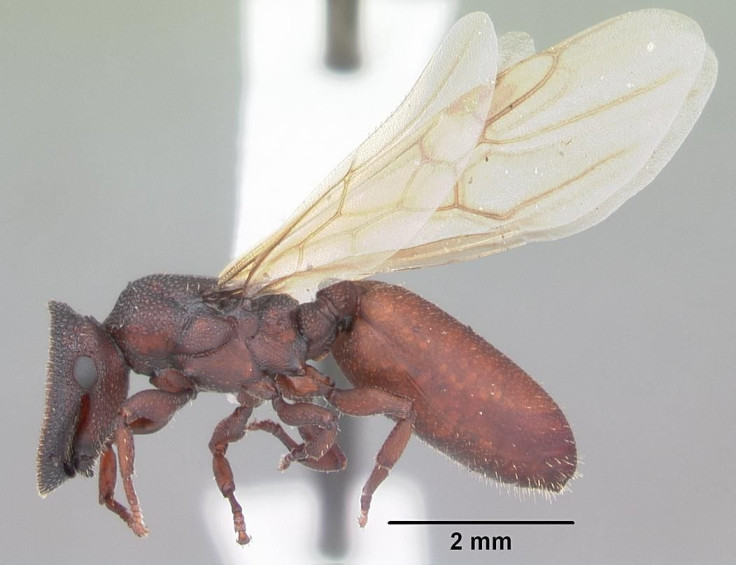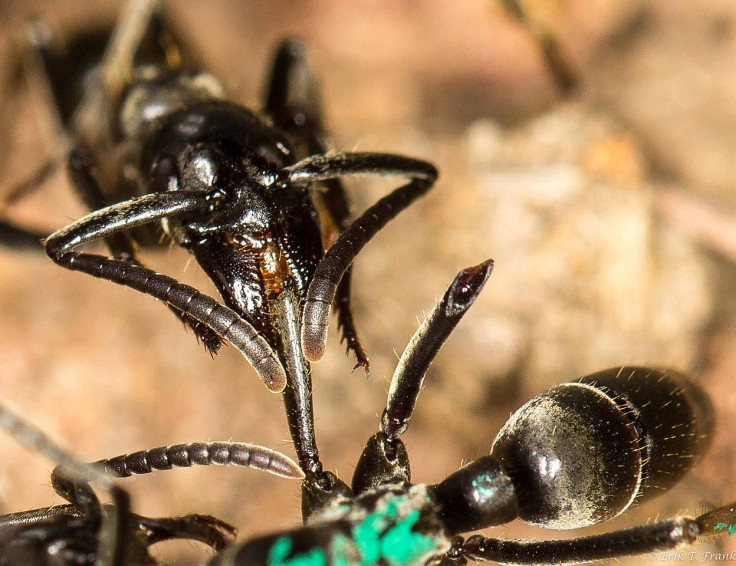4 Weird Things Ants Do, From Poisoning Children To Licking Amputations

Ants may be small, but they have a lot going for them. The insects have strength in numbers, which allows them to band together to survive and to persevere even when they lose a few of their comrades.
One thing that makes them intriguing is their behavior — some of it is familiar to humans, while other things they do can appear bizarre. Here are five weird ant behaviors that give a window into their tiny lives.
Licking Severed Limbs

Scientists recently caught ants in the act of what was supposed to be a purely human behavior: nursing their injured friends. And they do it by “licking” at the wounds.
The African ant species Megaponera analis, also known as the Matabele ant, preys upon termites by hunting them in groups. It can be a dangerous business for the ants, with termites biting off the limbs of their attackers. But scientists found that injured ants signal to their friends when they are intact enough to be saved, and the rescuers respond by treating the wound with their antimicrobial-packed saliva.
When they are treated, only about 10 percent of the ants die from infection, compared to 80 percent of the untreated.
Poisoning Their Kids
When the pupae of the ant Lasius neglectus is sick, adult ants will rip open their cocoons and bite them to inject antimicrobial poison. The poison kills the infection before it has a chance to spread, but it also kills the young ants.
The behavior is called "destructive disinfection" and is a sacrifice that saves the rest of the ant colony from what could have been a devastating outbreak in the insect’s community.
“The ants do try to get rid of the fungus first,” scientist Sylvia Cremer explained after her team of researchers recorded the behavior. “They care for the pathogen-contaminated colony members by intensively grooming their bodies to get rid of the fungus’ spores. If this doesn’t prevent infection, however, they kill the infected colony-members.”
Becoming Their Own Ship
Most associate fire ants with their sting but these insects are also notable for their ability to cling together and turn their community into one giant raft. The strategy saves them from flood waters like the ones that swept through Texas during Hurricane Harvey, for example.
Scientists have found that when fire ants, species name Solenopsis invicta, are under threat from water, the large group of ants hold firmly onto one another to create the raft. Their links repel water and trap air bubbles for them to breathe.
Using Their Heads As Doors
A group of ants, known as "door-head ants," use their flat noggins like stoppers to close off the entrances to their homes, which are small holes in trees previously carved out by beetles. To avoid an invasion from other insects looking for a comfortable nest, the heads plug up the entryway as a defensive strategy.
The armored, gliding ants belong to the genus Cephalotes and can be found in tropical and subtropical areas. They are sometimes known as "turtle ants."
© Copyright IBTimes 2024. All rights reserved.





















